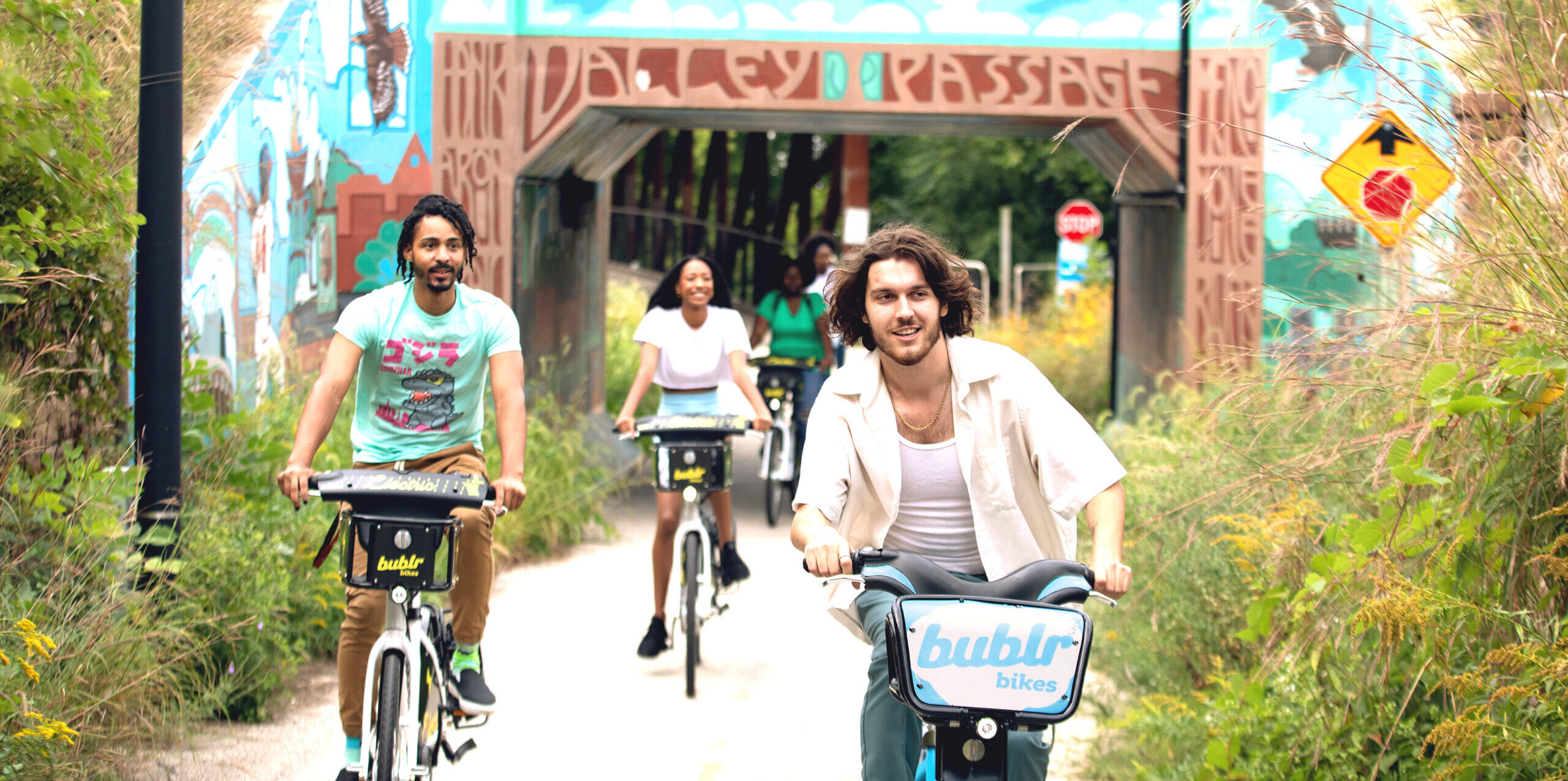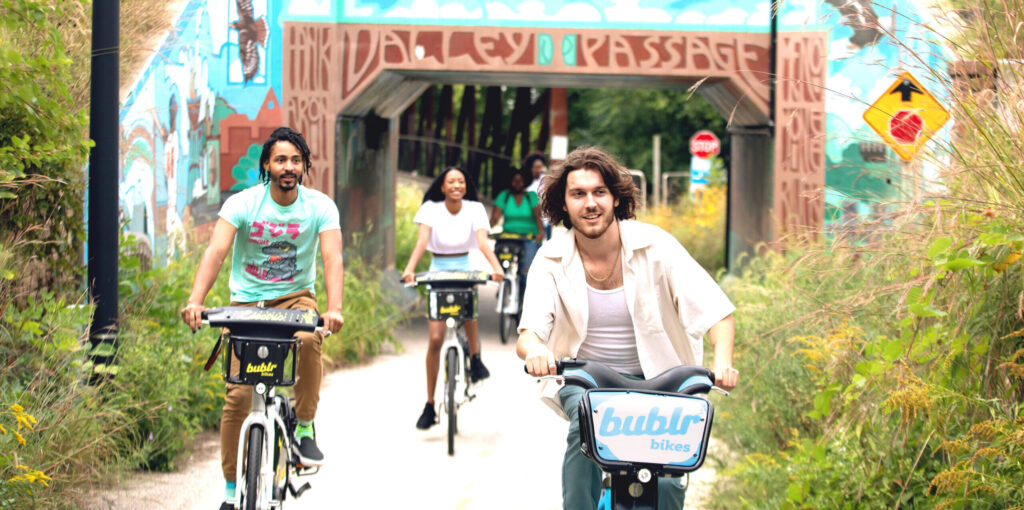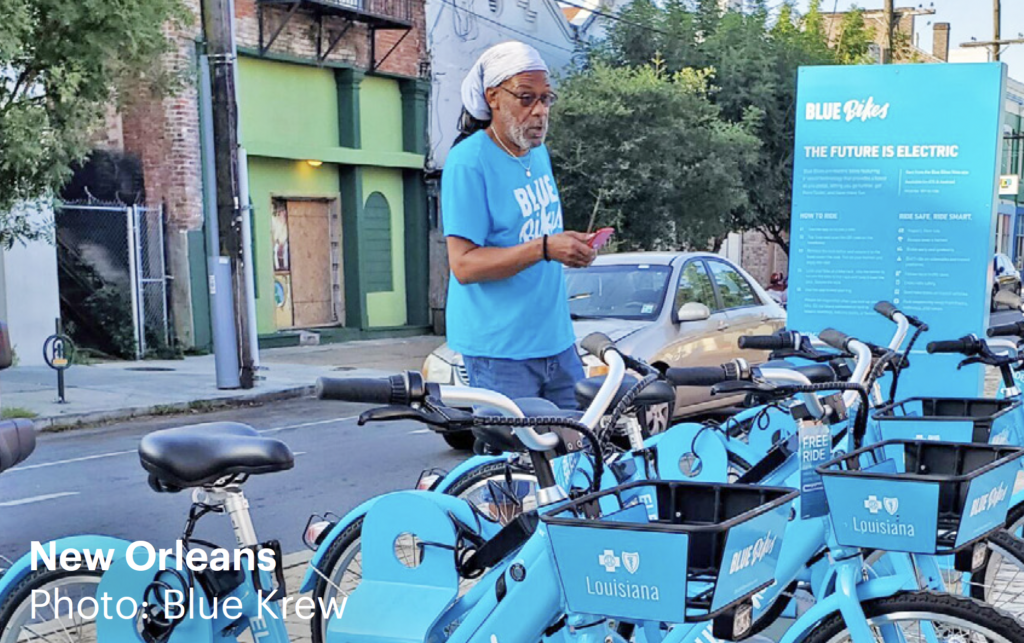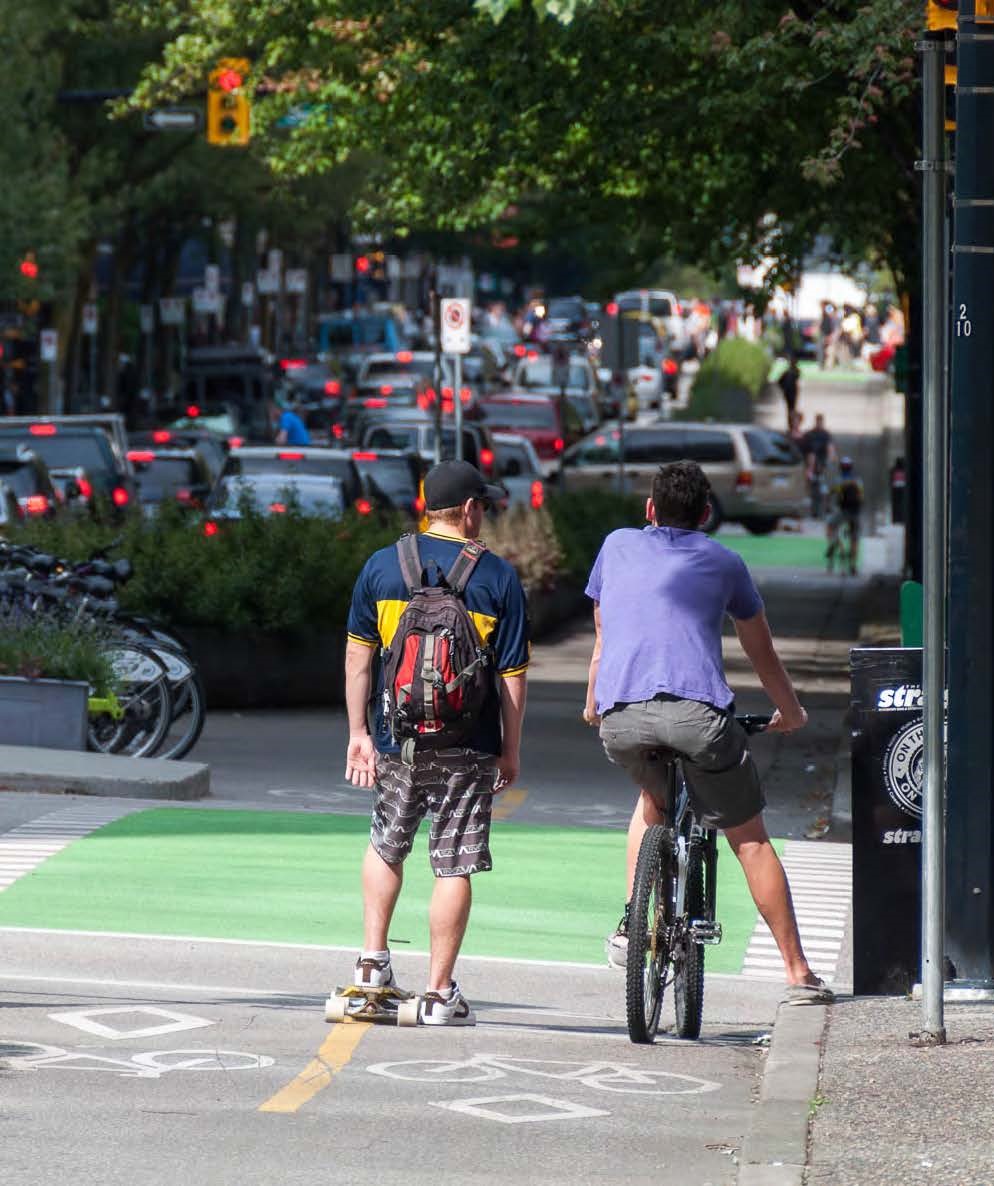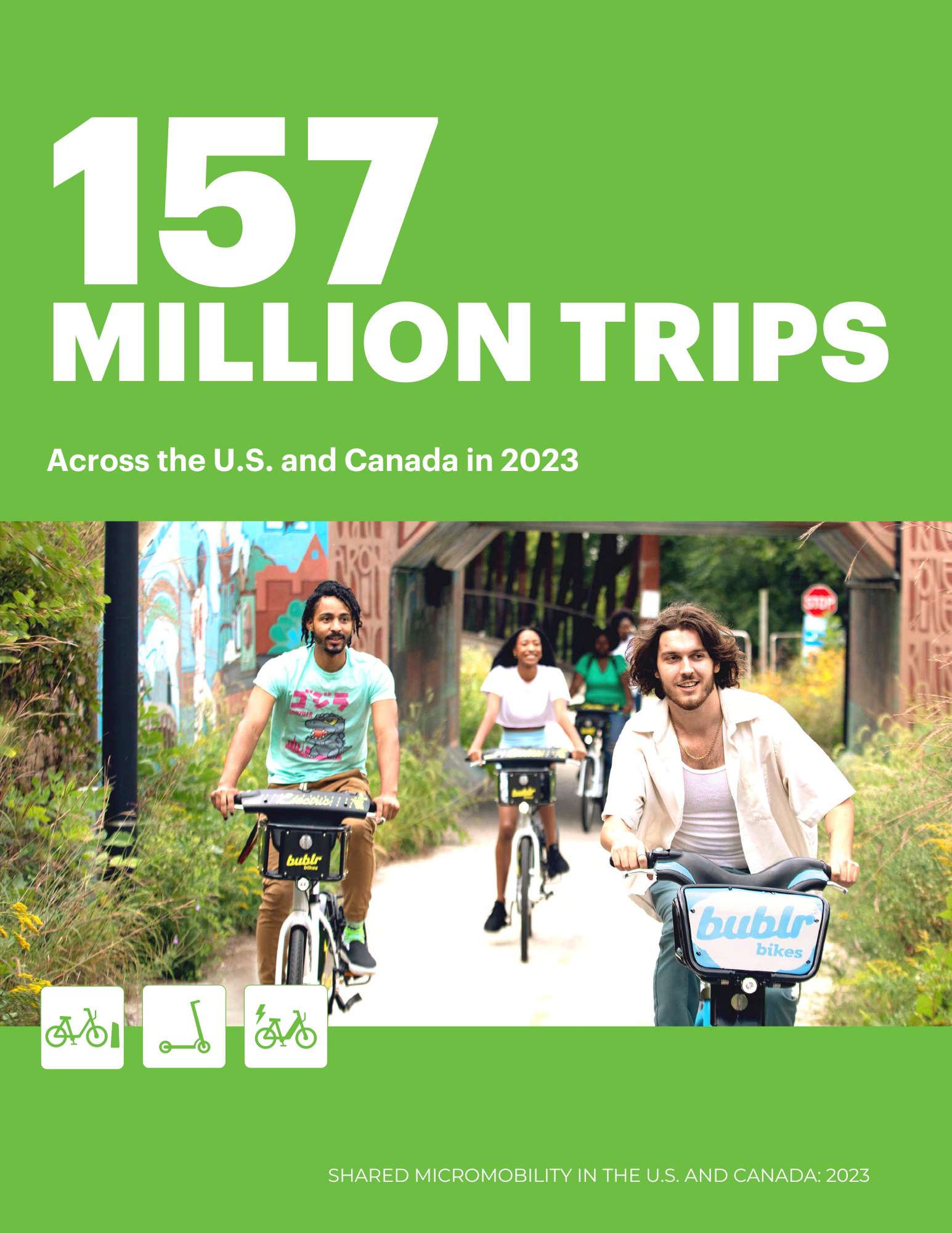
Trips taken on bike share and scooter share systems in the U.S. and Canada reached an all-time high in 2023, according to a new analysis by the National Association of City Transportation Officials (NACTO).
NACTO’s 2023 Shared Micromobility in the U.S. and Canada report found that people took 157 million trips on bike and scooter share in 2023, surpassing the previous peak of 147 million trips in 2019. Yet, despite the incredible popularity of shared bikes and scooters, some bike and scooter share systems folded or otherwise had trouble financing their operations in 2023, and many cities experienced dramatically climbing costs for riders–especially for e-bikes and shared scooters.
NACTO’s annual report, which examines data on dockless e-bikes, dockless scooters, and station-based bike share systems in cities across the U.S. and Canada, found that people took 133 million trips on shared micromobility in the U.S. and 24 million trips in Canada. Shared micromobility trips in Canada increased by a whopping 40% in 2023, due to the continued expansions of station-based systems and the introduction of dockless scooters into new markets. Trips in the U.S. increased by 16% in 2023, driven largely by the continued growth of e-bike trips on larger station-based systems.
The report highlights notable trends in shared micromobility:
- Ridership on station-based bikes grew by over 10 million rides for the third consecutive year, reaching an all-time high of 81 million rides in 2023.
- E-scooter use began to bounce back in 2023, with a 15% increase in trips overall. In Canada, e-scooter ridership doubled from 2 million in 2022 to 4 million in 2023 (making up 17% of all shared micromobility ridership in the country).
- Dockless e-bike systems saw robust growth, while still representing the smallest portion of shared micromobility ridership. Trips nearly quadrupled in Canada (from less than 100,000 trips in 2022 to 300,000 trips in 2023) and increased by almost 50% in the U.S. (from 4.5 million to 6.7 million trips).
- Shared systems are grappling with unstable funding models–including bankruptcies and layoffs at private operators and sponsorship losses at publicly-owned systems.
- Affordability is a growing challenge for bike share and scooter share users, and prices are now significantly higher than other public transportation options.
The report includes recommendations for how cities can ensure the long-term success of these systems, including:
- Investing public money in shared micromobility capital and operating costs: public ownership of systems and public subsidies can make shared micromobility services more broadly affordable and reliable.
- Eliminating sales taxes on shared micromobility: Riders on other forms of public transportation don’t have to pay sales tax–removing this expense will bring this mode in line with trips on trains and buses.
- Build the infrastructure that safely connects people to where they want to go: Shared micromobility ridership is strongest in areas with well-connected, protected bike lane networks and shared bikes and scooters close to homes and popular destinations.
“In the 15 years since bike share premiered in North America, shared micromobility has become an essential part of how people of a variety of backgrounds travel through many cities in everyday life,” said NACTO Executive Director Ryan Russo. “However, despite saving residents time, helping reduce traffic congestion and the wear and tear on local roads, shared bikes and scooter programs are unstable, with user costs in many cases increasing past people’s budgets. Cities need to take a hard look at the options they have to shore up these systems, including in some cases by investing public money to make shared micromobility more affordable–particularly for those struggling with the costs of transportation–while continuing to build connected networks of bike lanes to keep riders safe and comfortable.”
“Shared micromobility systems are hugely popular across North America, but need dependable funding in order to stay affordable while continuing to provide service,” said Tangier Barnes Wright, Deputy Director of Shared Micromobility at PeopleForBikes. “To help, cities and transit systems should consider public ownership of systems, public subsidies, and finding long-term sponsors that align with their missions.”
“Shared micromobility fills key gaps in San Francisco’s mobility networks,” said Jeffrey Tumlin, Executive Director of the San Francisco Municipal Transportation Agency. “Shared e-bikes help get people up our famous hills. A person on a shared bike or scooter takes up a tenth the roadway space as someone in a rideshare or private car, allowing our streets to move more people.”
“Investing in our regional bike share program is a key component to Boston reaching its transportation goals,” said Jascha Franklin-Hodge, Chief of Streets for the City of Boston. “We are focused not only on increasing the accessibility of our Bluebikes system through our Boston Bikes Pass and the addition of e-bikes but also on connecting and expanding our network of protected bike lanes. This encourages more people to use Bluebikes because they feel safer and more comfortable riding on our streets.”
“Since its launch, Citi Bike has become a vital transportation option that has connected communities, expanded opportunities, and inspired cities across the U.S. to implement bike share programs of their own,” said Ydanis Rodriguez, New York City Department of Transportation Commissioner. “It’s clear that reliable and convenient micromobility programs improve the lives of New Yorkers and those who visit from around the globe. DOT’s bike share program, coupled with our successful e-scooter share program, make our city more livable and provide new connections to unserved areas across the five boroughs.”
“2023 was another record-breaking year for Bike Share Toronto ridership,” said Justin Hanna, Director of Micro-Mobility at the Toronto Parking Authority. “This was no accident. Our Four-Year Growth Plan was instrumental in securing a strong partner who shares our values and supports our vision. We had clear objectives and knew what we wanted from a partner, while potential sponsors could clearly see if Bike Share Toronto, and our City, was the right fit for them. With clear support from Tangerine Bank, on a number of fronts, including financial resources, technology, and customer experience expertise, we’ve been able to grow bike share’s customer base and expand the network into new areas of the City.”
“Portlanders have long embraced active transportation, and since the end of the pandemic we have seen them embrace shared e-bikes and shared e-scooters at record levels,” said Millicent Williams, Portland Bureau of Transportation Director. “We’re supporting these sustainable transportation options with our growing network of over 400 miles of bikeways and by committing to a permanent program for shared e-scooter service. We appreciate how NACTO provides research and ongoing peer education among city transportation leaders, so together we can find solutions that will help make micromobility more affordable and more financially sustainable for the long term.”
###
About the National Association of City Transportation Officials (NACTO)
NACTO is an association of 100 North American cities and transit agencies that exchange transportation ideas, insights, and practices and cooperatively approach national transportation issues. The organization’s mission is to build cities as places for people, with safe, sustainable, accessible, and equitable transportation choices that support a strong economy and vibrant quality of life. To learn more, visit NACTO.org, sign up for our newsletter, or follow us on social media, including on LinkedIn, Facebook, and Instagram.
About NACTO’s Cities for Cycling Initiative
As cities work to build successful bike and scooter share systems, and the infrastructure to support them, NACTO supports peer cities with the latest data and best practice guidance. From NACTO’s shared micromobility reports, to an upcoming update of the seminal Urban Bikeway Design Guide, NACTO Cities for Cycling resources are used by dozens of cities across North America to make streets safer, more accessible, more equitable, and friendlier for people walking, biking, and taking transit.
Press Contact
Elise Harmon-Freeman | [email protected]
For Immediate Release
July 22, 2024
